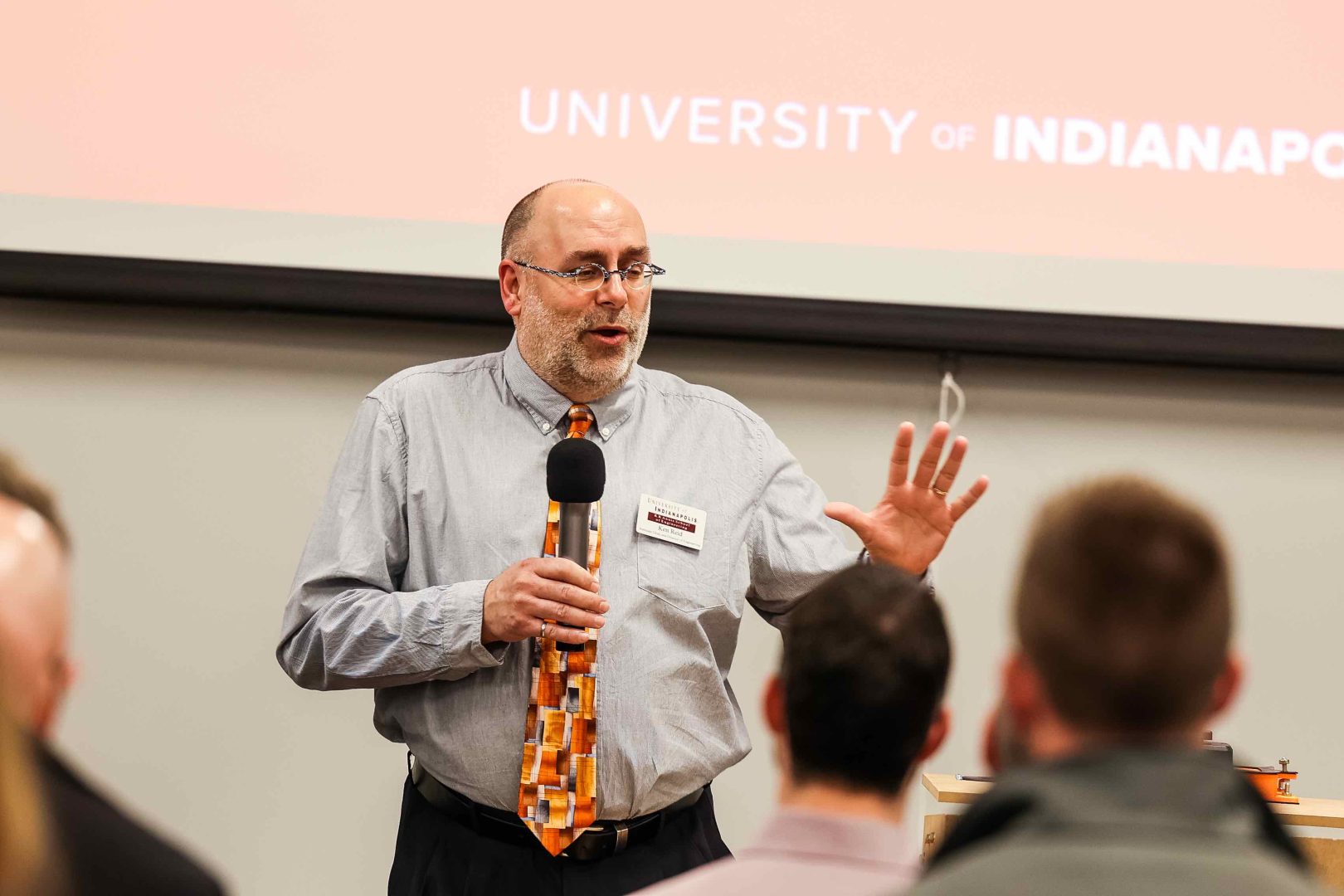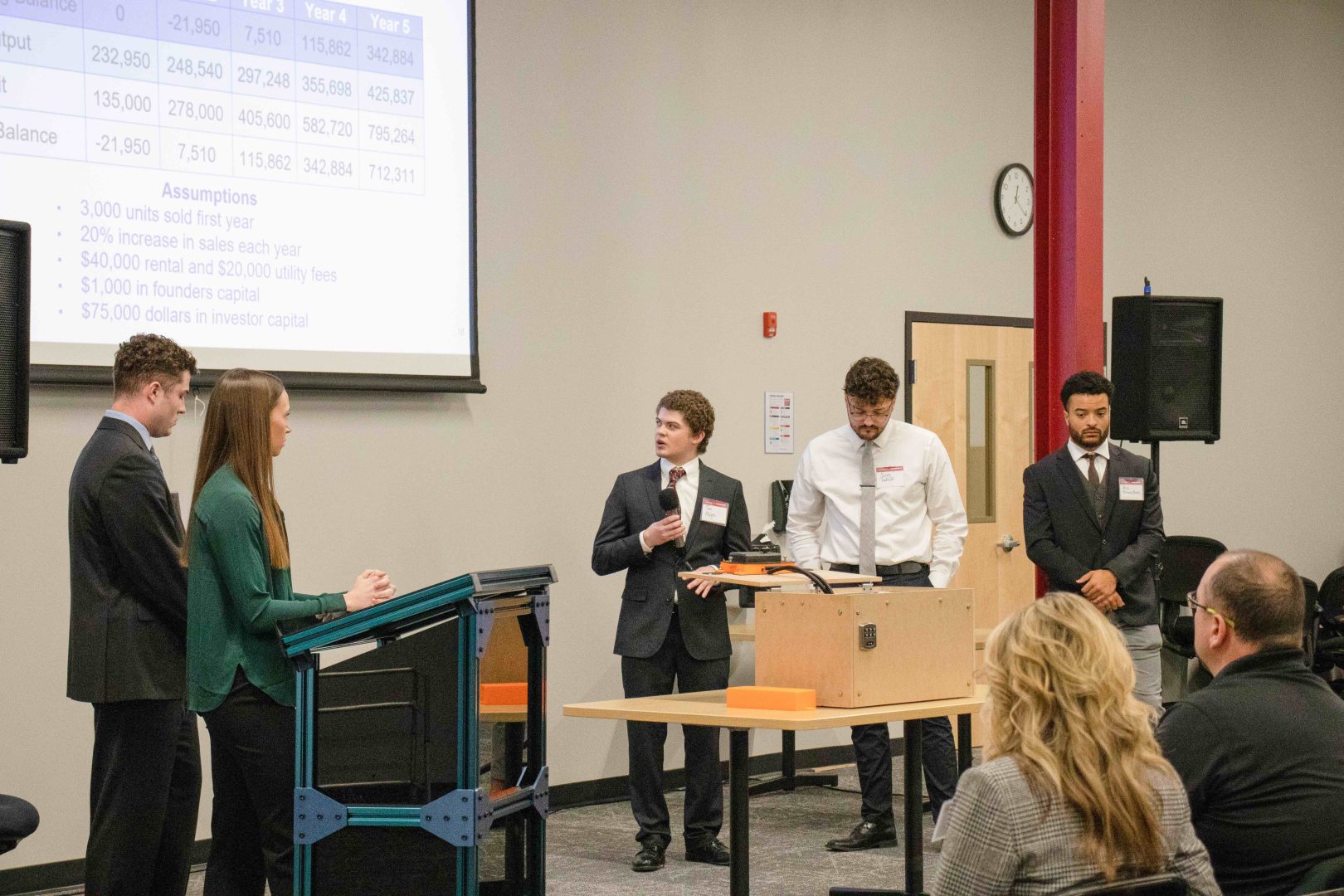Since the University of Indianapolis launched the R.B. Annis School of Engineering in the fall of 2017, one of the core principles of the program has been the DesignSpine program, which is an entrepreneurial focused curriculum that focuses on hands-on work, according to Associate Dean and Director of Engineering Ken Reid. One of the major parts of that program culminates into the Engineering Business Pitch Competition, where 16 students presented their work in R.B. Annis Hall on April 19. Assistant Professor of Engineering David Olawale said the presentations combine the entire picture of engineering with a heavy focus on the entrepreneurial side of the field. Olawale said the students break into multidisciplinary teams where they go through the entire development process of a product, similar to how they would in the professional world, and he said that this experience of understanding not only development, but the research, marketing and other components associated with engineering is what sets this program apart from others.

“We’re able to take them [the students] through that process to just start doing engineering. First, focus on the customer to understand the needs, and then based on that you can now apply engineering principles to create a solution that can compete,” Olawale said. “ . . . They also now get to actually work with some students from Art and Design, and then this will introduce something new, they’re able to work with MBA [Masters in Business Administration] students. So they just don’t do the customer aspect to do the engineering aspect in technology development. They do the business model development, and then they run it up with this business pitch competition.”
The pitch competition was not just run by a group of professors, but had the students pitching products to professionals in the industry that are actively looking for new products, according to Reid. He said that giving the students the opportunity to present their work in this way gives them the confidence to do presentations in the future and learn how their body language affects what they are presenting.
“You can watch your audience to kind of judge their level of interest,” Reid said. “Here’s all these different things that are embedded in professional communication that we know are important that this gives the students a better chance to experience it, and actually follow it.”
This is the fourth year of this specific program within DesignSpine, but Olawale said due to COVID-19, they have done the presentations virtually the past two years. The virtual environment created challenges and roadblocks, but now they are back in person and able to continue to grow the program, Olawale said. One of the key areas of growth was within the business side of the presentations, he said, and that enlisting the help and expertise of MBA students has allowed the engineering students to learn more about the financial side of engineering and entrepreneurship.

Olawale said that this program and this fast experience is what sets the R.B School of Engineering apart. With over 4,000 universities and colleges in the United States, he said, the goal is to differentiate the UIndy graduates from the rest. Reid said that for some universities, students have to wait until their senior year to get the experiences that UIndy students get within their first or second year.
“Other engineering programs have senior design classes, but it’s usually the first time that students have had a chance to do a design sort of on their own outside of a class and a lab,” Reid said. “[At UIndy] they’re actually figuring out who their customer is, they’re actually coming up, going through the design process as a team. They have professors as consultants so that professors can help in the design, but they’re doing it every year.”
According to Olwale, even with the youth of the program, they have seen students land high-quality jobs and many students point to the program as what shaped them into who they are. He said that UIndy students have been able to beat out other students with masters degrees due to the experience they have gained in this program. Reid said UIndy’s reputation for high-quality education and graduates continues to grow.
“We’ve had feedback from our Industrial Advisory Board, from people that hire our graduates, from our graduates themselves, that say they are so much better prepared to head into the workplace than they see their peers from other institutions,” Reid said. “They’ve had that chance not only to do a design, but they’ve also had that chance to present it, work with peers, work with customers, have face to face meetings with customers, all these things that all of our employers tell us they need from graduates. Most other programs say that their students get experience in this but we actually give our students experience in these areas.”






